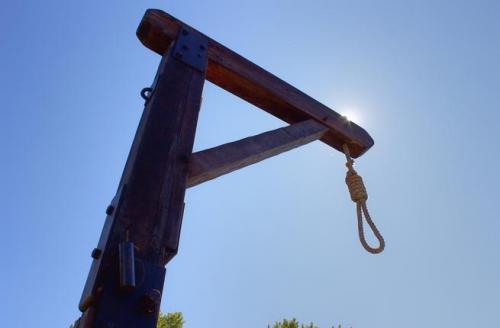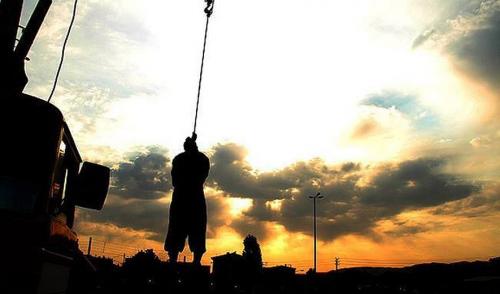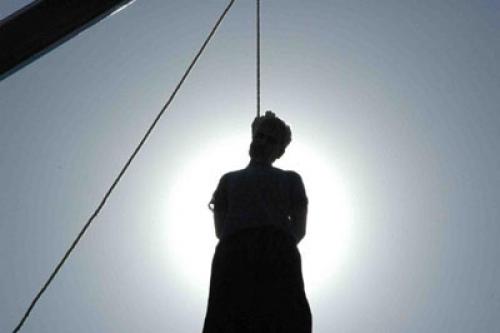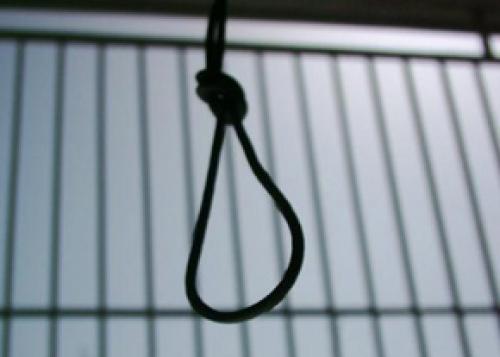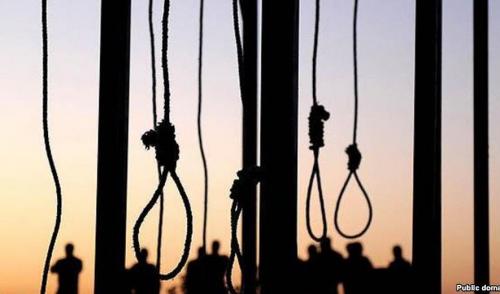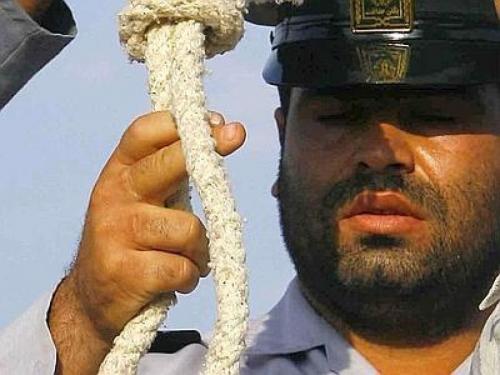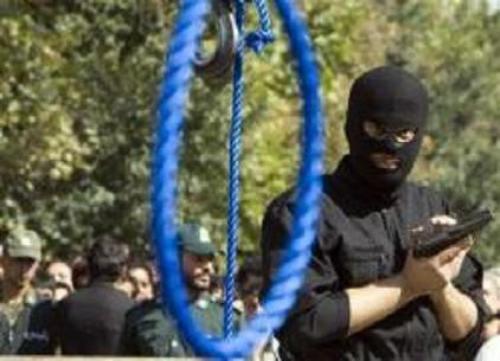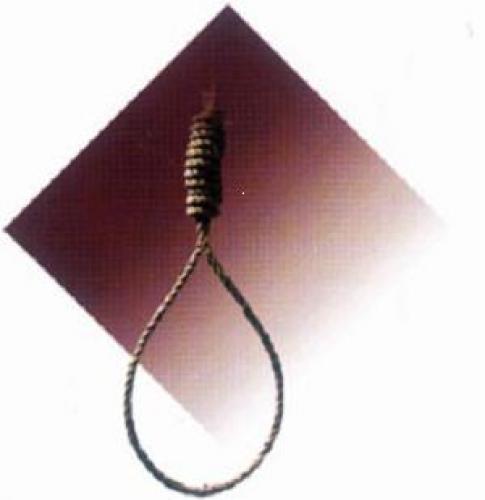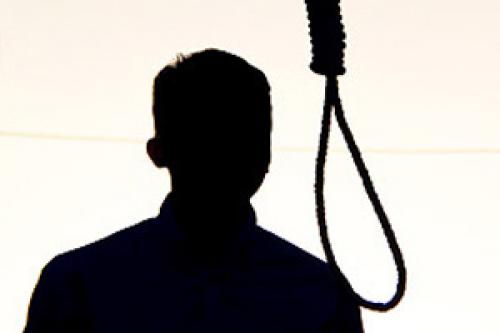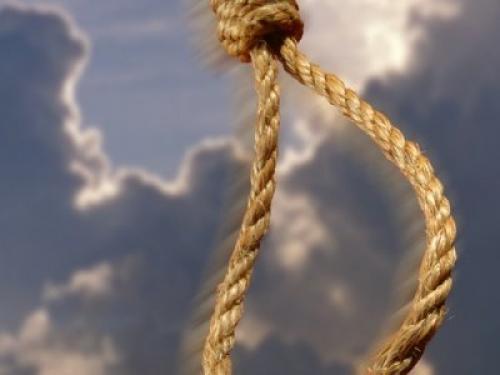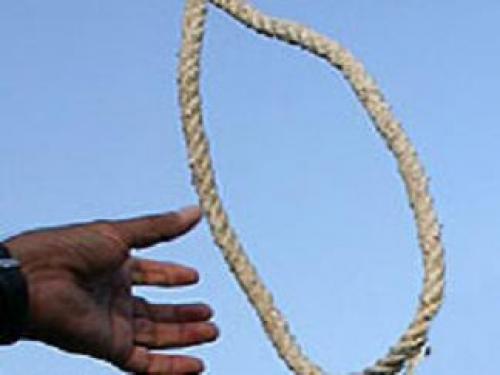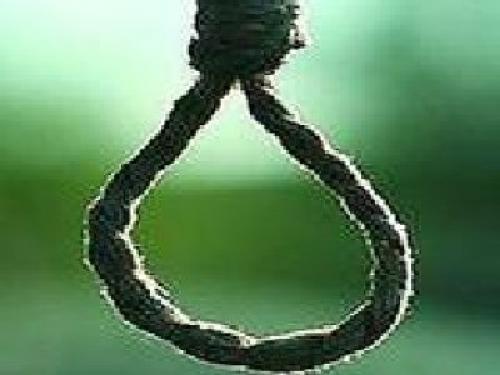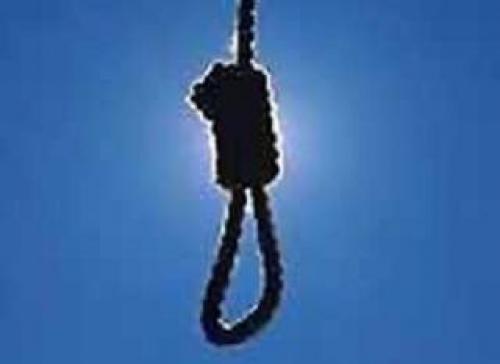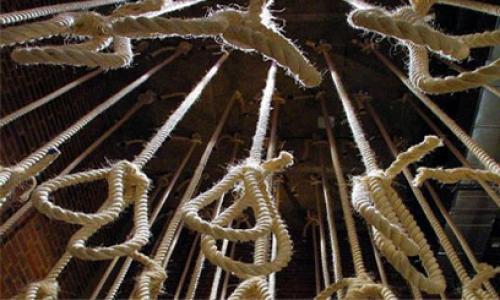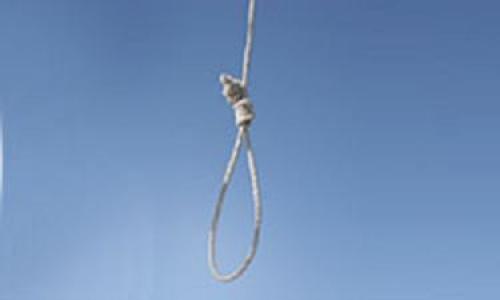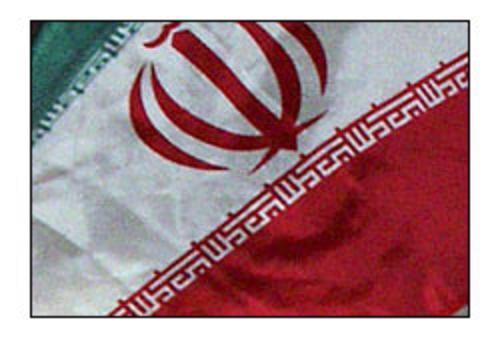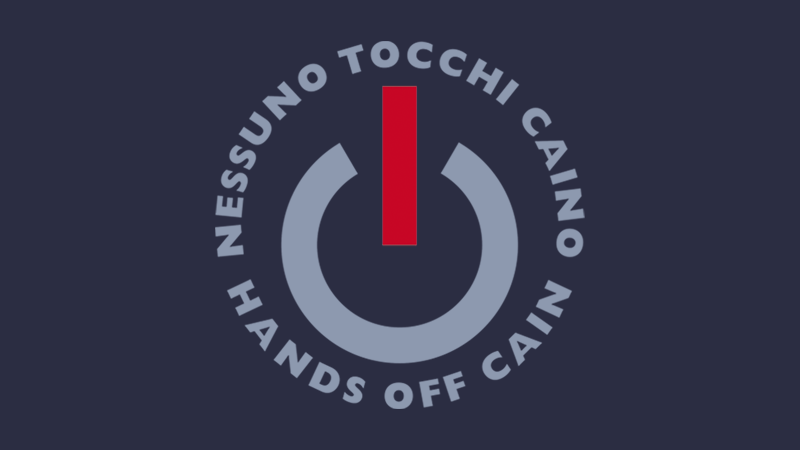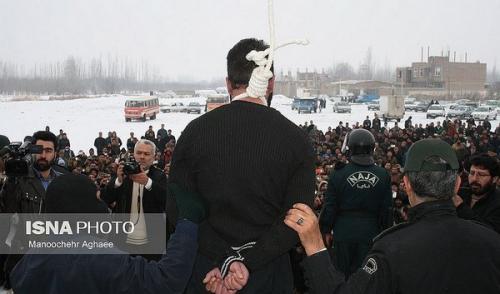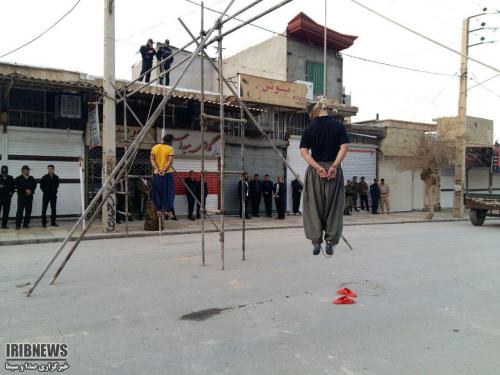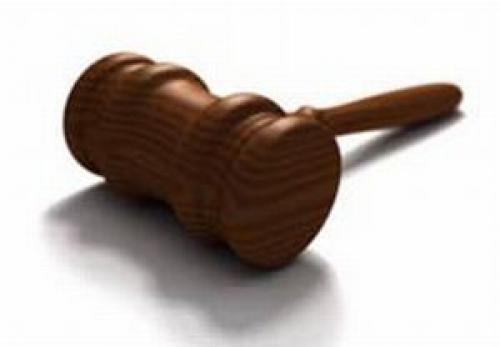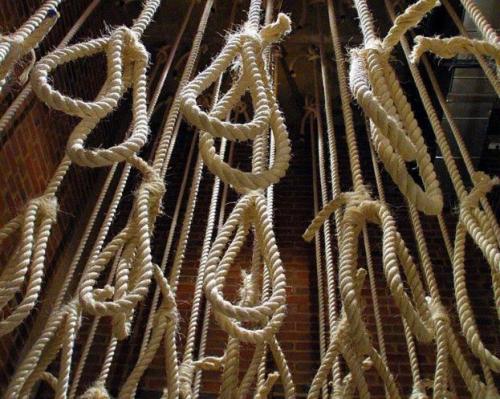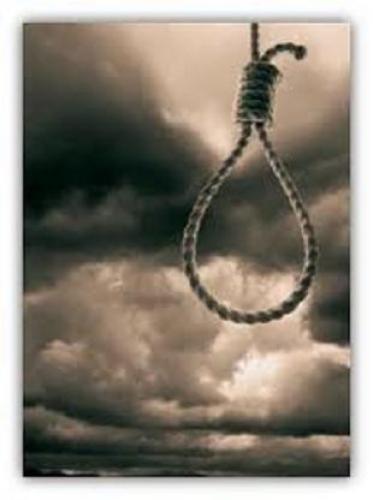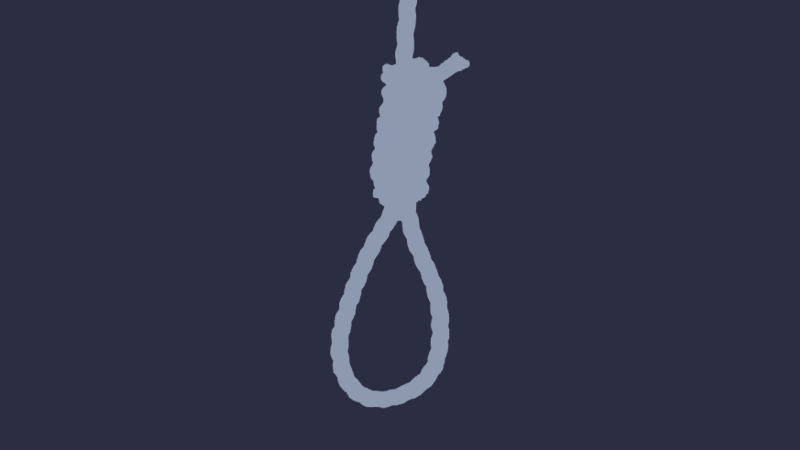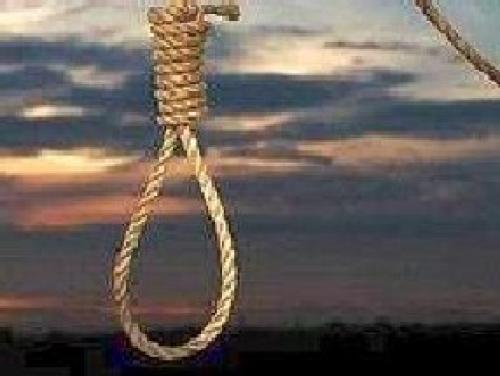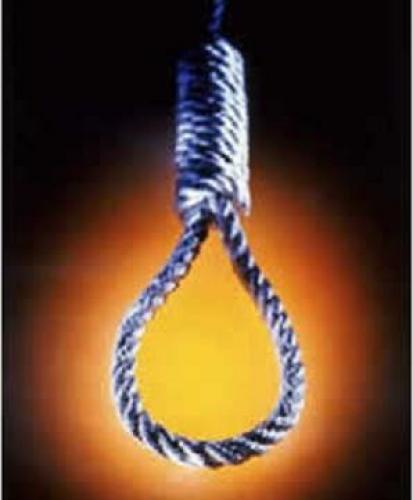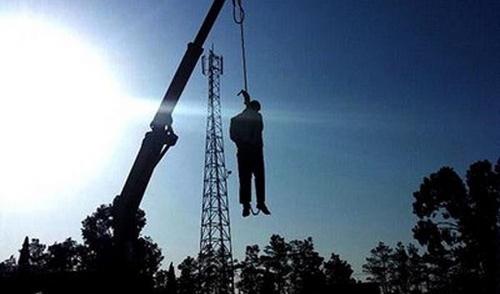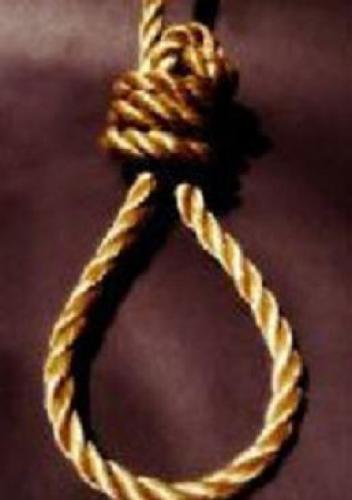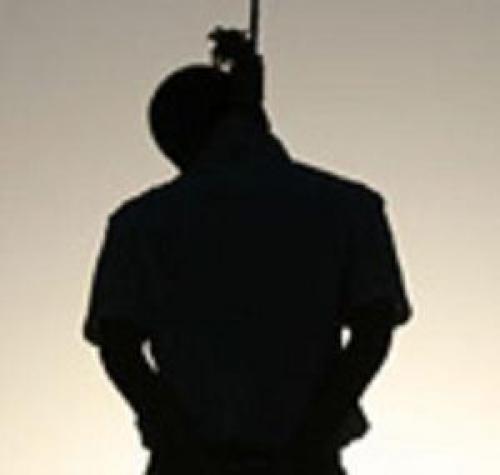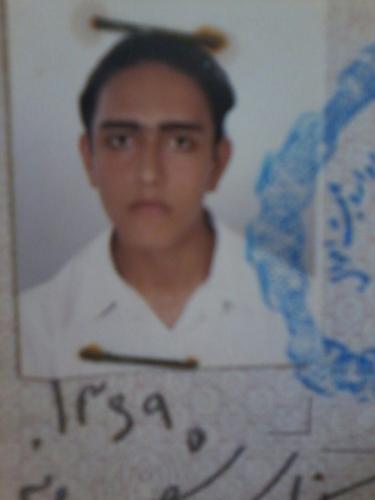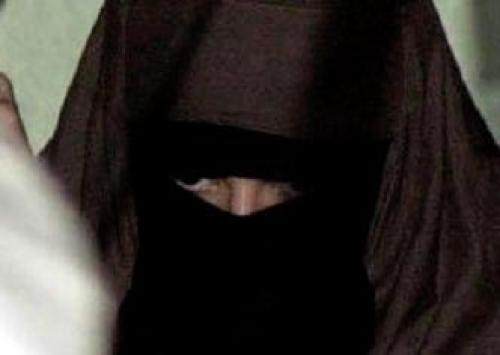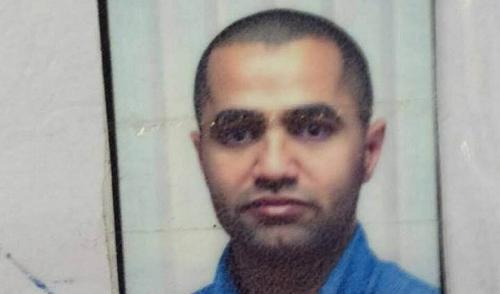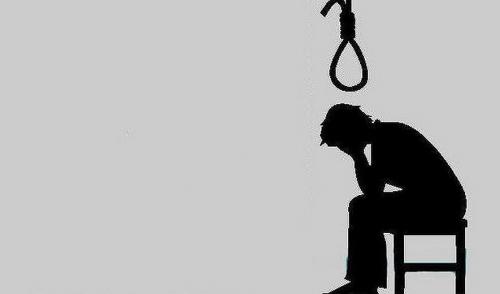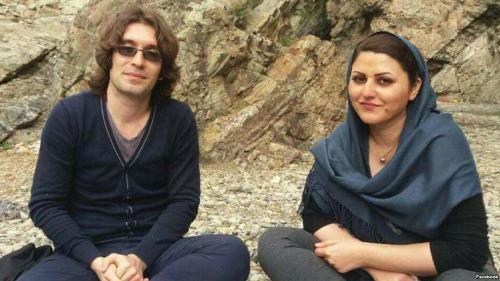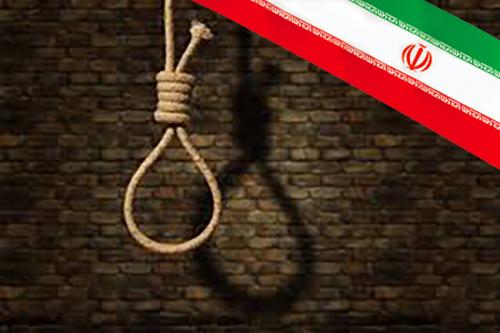government: theocratic republic
state of civil and political rights: Not free
constitution: 2-3 December 1979; revised 1989 to expand powers of the presidency and eliminate the prime ministership
legal system: based on Sharia law system
legislative system: Unicameral Islamic Consultative Assembly (Majles-e-Shura-ye-Eslami)
judicial system: Supreme Court
religion: Shia majority; 10% Sunni; Christian, Jewish, Baha'i and Zoroastrian minorities
death row:
year of last executions: 0-0-0
death sentences: 15
executions: 544
international treaties on human rights and the death penalty:International Covenant on Civil and Political Rights
Convention on the Rights of the Child
Statute of the International Criminal Court (which excludes the death penalty) (only signed)
situation:
In accordance with Article 4 of the Iranian Constitution, Islamic law is “the essential source for all the branches of legislation”, including civil and penal legislation.
Offences punishable by death include: murder; armed robbery; rape; blasphemy; apostasy; adultery; prostitution; homosexuality; drug-related offences and plotting to overthrow the Islamic regime, kidnapping, treason, espionage, terrorism, economic crimes, military offences. The election of Hassan Rouhani as President of the Islamic Republic on 14 June 2013 has led many observers, some human rights defenders and the international community to be optimistic. However, the new Government has not changed its approach regarding the application of the death penalty, and indeed, the rate of executions has risen sharply since the summer of 2013.
At least 2,744 prisoners have been executed in Iran since the beginning of Rouhani’s presidency (between 1 July 2013 and 31 December 2016).
From 1 July 2013 to 31 December 2013, there were at least 444 executions, in 2014 there were at least 800 executions and in 2015 at least 970. In 2016, there were at least 530 executions, down 45,4% compared to 2015 and down 34% compared to 2014.
If the number of executions is lower than previous years, the country continues to record the largest number of per capita executions in the world also in 2016.
In 2016, 194 execution cases (36%) were reported by official Iranian sources (websites of the Iranian Judiciary, national Iranian broadcasting network, and official or state-run news agencies and newspapers); 336 cases (64%) included in the annual numbers were reported by unofficial sources (other human rights NGOs or sources inside Iran). The actual number of executions is probably much higher than the figures included in the Annual Report of Hands Off Cain.
The crimes that have motivated death sentences are divided as follows in terms of frequency: drug-related offences: 309 cases (58.3%), 72 of them reported by official Iranian sources; murder: 132 (24.9%), including 65 announced by official sources; rape: 36 (6.7%), of which 33 announced by official media; political offenses or “terrorism” and Moharebeh (waging war against God): 25 (4.7%), including 24 officially reported; armed robbery, extortion with other political and nonviolent crimes: 7 (1.3%), including 4 officially reported. In at least 21 other cases (3.9%), the crimes for which the convicts were found guilty remained unspecified.
In 2016, executions of women have slightly decreased: there were at least 10, but only 3 were announced by Iranian authorities. In 2015, Iran had hanged at least 19 women.
Executions of child offenders continued into 2016, in open violation of two international treaties to which it is party, the ICCPR and the CRC, both of which outlaw the execution of people who had committed their crimes when they were under the age of 18. At least 5 juvenile offenders were hanged in 2016, (2 for murder cases, 2 for drug and 1 for sodomy and none of which were reported by official Iranian sources).
In 2016, at least 4 people were hanged for clearly political offences. But it is probable that many of the people put to death for ordinary crimes or for “terrorism,” may well be in fact political opponents, in particular members of Iran’s ethnic minorities, including: Iranian Azerbaijanis, Kurds, Baluchis, and Arabs. Accused of being Mohareb – enemies of Allah – those arrested are often subject to rapid and severe trials that often end with a sentence of death. The punishment for Moharebeh is death or amputation of the right hand and left foot, according to the Iranian Penal Code.
Hanging
In accordance with Article 4 of the Iranian Constitution, Islamic law is “the essential source for all the branches of legislation,” including civil and penal legislation.
Hanging is often carried out by crane or low platforms to draw out the pain of death. The noose is made from heavy rope or steel wire and is placed around the neck in such a fashion as to crush the larynx causing extreme pain and prolonging the death of the condemned. Hanging is often carried out in public and combined with supplementary punishments such as flogging and the amputation of limbs before the actual execution.
In July 2011, the Japanese crane company Tadano announced that it had ended contracts with the Iranian Government, after United Against Nuclear Iran launched a Cranes Campaign, publishing on its website a list of eight international companies that send crane resources to Iran, with photos of the cranes being used as execution devices. In August 2011, another Japanese crane manufacturer, UNIC, announced the end of its business in Iran, joining Tadano and Terex in pulling out of Iran following UANI’s Cranes Campaign.
In 2016 the Islamic Republic carried out at least 530 hangings: 194 executions were announced by official Iranian sources, and 336 cases were reported by unofficial sources.
Stoning
In April 2013, the Guardian Council, an unelected body of 12 religious jurists empowered to vet all legislation to ensure its compatibility with Iran’s Constitution and Sharia, reinserted the stoning provision into a previous version of the new Penal Code, which had omitted stoning to death as the explicit penalty for adultery. The draft Penal Code, as amended by the Guardian Council, explicitly identifies stoning as a form of punishment for people convicted of adultery or sex outside of marriage. Under Article 132, paragraph 3, a man or a woman can be stoned to death for multiple extramarital affairs. In addition, under article 225, if a court and the head of the judiciary rule that it is “not possible” in a particular case to carry out the stoning, the person may be executed by another method if the authorities proved the crime on the basis of the eyewitness testimony or the defendant’s confession. The revised code also provides that courts that convict defendants of adultery based on the “knowledge of the judge,” a notoriously vague and subjective doctrine allowing conviction in the absence of any hard evidence, may impose corporal punishment sentences of 100 lashes rather than execution by stoning. The penalty for people convicted of fornication, or sex outside of marriage that involves an unmarried person, is 100 lashes.
Iran had the world’s highest rate of execution by stoning, but no one knows with certainty how many people have been stoned in Iran. According to a list compiled by the Human Rights Commission of the National Council of the Iranian Resistance, at least 150 people have been stoned in Iran since 1980. The reported numbers are probably lower than the actual numbers, because most of the condemnations to stoning issued by the Iranian authorities are handed down secretly, as well as for the fact that so little information is actually available from many prisons in Iran. Shadi Sadr, who has represented five people sentenced to stoning, said Iran carried out stoning in secret in prisons, in the desert or very early in the morning in cemeteries.
From 2006 to 2009, stoning was carried out at least once a year for a total of at least seven executions; the last was carried out on 5 March 2009 on a man condemned of adultery.
Since 2015, at least two women convicted of adultery have been sentenced to stoning, according to the report of the Special Rapporteur on the situation of human rights in the Islamic Republic of Iran, Ahmed Shaheed, submitted to the UN General Assembly on 30 September 2016. On 7 July 2016, the Government asserted that the judiciary had converted these sentences to other punishments and that no stoning sentences had been carried out in the country in recent years. However, the Government noted that criminalization of adultery is consistent with its interpretation of Islamic law and that stoning is an effective deterrent.
Executions in public
In January 2008, then-judicial chief Ayatollah Mahmoud Hashemi Shahroudi decided that public executions, in the future, would be carried out, “only with his approval and based on social necessities.” In fact, public executions decreased in 2008, when there were no less than 30 public hangings, of which 16 took place after Shahroudi’s decree, while no less than 12 people were hanged in public places in 2009, compared to at least 110 people who were publicly executed in 2007.
However, since the 2009 post-election protests in Iran, the number of executions, particularly public executions, has risen dramatically. In 2010, at least 19 people were hanged publicly. In 2011, public executions have more than tripled, with at least 65 people being executed in public. In 2012 there were at least 60 public executions. In 2013, at least 59 public executions were held.
At least 57 people were hanged in public in 2015 and at least 31 people were hanged in public in 2016, 28 announced by official sources.
Death penalty for juvenile offenders
Executions of child offenders continued into 2016, in open violation of two international treaties to which it is party, the ICCPR and the CRC, both of which outlaw the execution of people who had committed their crimes when they were under the age of 18. At least 5 juvenile offenders were hanged in 2016 (2 for murder cases, 2 for drug and 1 for sodomy and none of which were reported by official Iranian sources). At least 17 juvenile offenders were hanged in 2014 and 3 in 2015.
Under Iranian law, girls above nine years of age and boys over 15 are considered adults, and therefore can be condemned to death. Authorities generally wait for young convicts to reach their eighteenth birthday before ordering their execution.
Following requests – ignored for years – to stay death sentences handed down for all convicts accused of committing crimes as minors, the Mullah’s regime announced a partial and, in reality, insignificant revision of the Iranian norm, once again, out of step with the international community.
The regime claims that the new Penal Code – which was approved in its latest version by the Guardian Council in April 2013 – abolishes the execution of children under eighteen. However, under Articles 145 and 146 of the new Penal Code, the age of criminal responsibility is still “puberty,” meaning nine lunar years for girls and fifteen lunar years for boys. Thus, the age of criminal responsibility has not changed at all in the new Penal Code.
Under Article 87 of the new Penal Code, the death sentence has been removed for juveniles only in Ta’zir crimes whose punishment can be administered at the discretion of the judge (such as drug offences). Under the same law, however, a death sentence may still be applied for a juvenile if he or she has committed offenses whose punishments have been specified in Sharia: Hudud crimes, that are defined as “claims of God” and therefore have mandatory sentences (such as sodomy, rape, fornication, apostasy, consumption of alcohol for the fourth time, Moharebeh (enmity against God), and “spreading corruption on earth”); Qisas crimes, that are defined as “claims of [His] servants,” and responsibility for prosecution rests on the victim, such as murder, which is treated as a private dispute between the murderer and the victim’s heirs, who are given the right to demand execution of the murderer (Qisas), or forgive him or demand compensation (Diya).
In fact, article 90 of the new Penal Code stipulates that legally “mature” individuals under eighteen (i.e., boys between the ages of fifteen and eighteen and girls between the ages of nine and eighteen) who are convicted of Hudud and Qisas crimes may be exempt from adult sentences – including the death penalty – only if it is established that they were not mentally mature and developed at the time of committing the crime, and could not recognize and appreciate the nature and consequences of their actions. Therefore, this article gives judges the discretion to decide whether a child has understood the nature of the crime and therefore whether he or she can be sentenced to death.
On 14 April 2016, UN High Commissioner for Human Rights Zeid Ra’ad Al Hussein expressed serious concerns about the large number of juvenile offenders reported to be on death row in Iran. He urged the authorities to ensure that no one is executed for offences committed under the age of 18, stressing that there is a strict prohibition against the execution of juvenile offenders in international human rights law, including in the International Covenant on Civil and Political Rights, which Iran ratified in 1975 and the Convention on the Rights of the Child, which it ratified in 1994.
War on drugs
Iranian law provides for the death penalty in cases of possession of more than 30 grams of heroin or 5 kilos of opium.
In December 2010, a new anti-drug law came into effect extending the death penalty to possession of other types of illegal substances such as methamphetamine.
In Iran drug-related offences are tried in Revolutionary Courts, which routinely fall far short of international fair trial standards. Revolutionary Court trials are frequently held behind closed doors and judges have the discretion to restrict lawyers’ access to the defendant during pre-trial investigations in limited cases. Under Article 32, death row prisoners convicted on drug-related offences do not have the right to appeal. Only the Attorney General or the head of the Supreme Court can appeal the death sentence for such convictions.
Since the vast majority of those executed for drug-related charges are not identified by last (family) name, it is not possible to confirm the charges. Human rights observers believe that many of those executed for common crimes such as drugs are actually political dissidents.
On 13 November 2015, in a rare public comment on the death penalty since he took office in June 2013, President Hassan Rouhani claimed Iran has hanged hundreds of drug offenders to prevent drug trafficking into Europe. In an interview yesterday with the Italian newspaper Corriere della Sera, Rouhani noted that “most executions refer to illicit drugs trafficking”, and warned that “if we abolished the death penalty we would enhance their drug trafficking up to the European countries and that would be dangerous for you”.
At the start of 2016, the UN signed a new $20 million programme for anti-drug operations in Iran, despite the country’s high execution rate of drug offenders. The UN’s new funding deal will more than double UN funding for Iranian counter-narcotics efforts, and will be administered by the United Nations’ Office on Drugs and Crime (UNODC). The money is expected to support a range of law enforcement operations, including the establishment of border posts designed to catch drug mules crossing the country’s border with Afghanistan. In October 2015 the UN’s special rapporteur on Iran, Ahmed Shaheed, warned that the country’s Government was using UN support to justify its aggressive use of capital punishment, noting that Iranian officials “pointed to statements about its efforts issued by the United Nations Office on Drugs and Crime to demonstrate international support for its approach.”
On 14 April 2016, UN High Commissioner for Human Rights Zeid Ra’ad Al Hussein appealed to Iran to halt executions for drug offences until Parliament debates a new law that would remove the mandatory death penalty for drug crimes. In December 2015, 70 Members of Parliament presented a bill to amend the existing mandatory death penalty for drug offences. The bill, which was introduced in Parliament in January2016, provides for life imprisonment in such cases. “Given the broadening recognition in Iran that the death penalty does not deter drug crime and that anti-narcotics laws need to be reformed, I call on Iran to take the important first step of instituting a moratorium on the use of the death penalty,” High Commissioner Zeid said. It remains to be seen whether it will be taken forward in the new Parliament.
As in previous years, drug trafficking was the most frequently used charge against those who were executed in Iran.
Of the at least 530 executions tallied by Hands Off Cain in 2016, at least 309 cases (58.3%), 72 of them reported by official Iranian sources are for drug-related offences.
The war on terror
In 2016, Iran executed at least 25 people on charges such as Moharebeh (enmity against God), “corruption on earth” or terrorism. Accused of being Mohareb – enemies of Allah –, those arrested are often subject to rapid and severe trials by the Revolution Courts behind closed doors that often end in a sentence of death.
In such cases, executions are often carried out in secret, without lawyers or family members being informed.
However, among those condemned to death or executed for Moharebeh and/or “corruption on earth”, several people were not directly involved in acts of violence. Some of them were political dissidents, members of banned groups or members of Iran’s ethnic and religious minorities, including Iranian Azerbaijanis, Kurds, Baluchis, and Arabs.
Death penalty for non-violent crimes, and for political motives and dissent
There have been some changes made in the new Islamic Penal Code which was approved in its latest version by the Guardian Council in April 2013. The term “homosexual” is presented as a charge in the new law for men who engage in same-sex relations. Previously it was only used for women. In any case, sexual relations between two individuals of the same sex continue to be considered Hudud crimes, and subject to punishments from one hundred lashes to execution.
According to Article 233 of the new code, the person who played an active role (in sodomy) will be flogged 100 times if the intercourse was consensual and he was not married, but one that has played a passive role will be sentenced to death regardless his marital status. If the active part is a non-Muslim and the passive part a Muslim, both will be sentenced to death. In accordance with Articles 236-237, homosexual acts (except for sodomy) are punished with 31-99 lashes (both for men and women). According to Article 238, homosexual relationship between women where whom there is contact between their sexual organs will be punished with 100 lashes.
Iran has continued to apply the death penalty for clearly non-violent crimes, and for political motives and dissent. In 2015, at least 15 people were hanged for clearly political offences and at least 4 in 2016.
Human rights observers believe that many of the people put to death in Iran for ordinary crimes – particularly drug crimes – or for “terrorism,” may well be in fact political opponents, in particular members of Iran’s ethnic minorities, including Iranian Azerbaijanis, Kurds, Baluchis, and Arabs. Accused of “enmity against God” (Moharebeh) and “corruption on earth” (ifsad fil-arz), those arrested are often subject to rapid and severe trials that often end with a sentence of death. The punishment for Moharebeh is death or amputation of the right hand and left foot, according to the Iranian Penal Code.
The Province of Khuzestan, where ethnic Arabs adhering to Sunni Islam make up the majority of the population, was theatre to harsh repression in 2007. Bombing attacks were even reported in the city of Ahwaz in the Province of Khuzestan in 2005, apparently in response to rumours of a Government plan to reduce the number of ethnic Ahwazi Arabs in the Province. Contrary to Tehran’s propaganda, most Arab movements in al-Ahwaz are not violent separatists. They primarily want an end to discrimination, cultural rights, social justice and regional self-government – not independence.
The Province of Sistan-Balochistan has also been the centre of heated repression towards Balochi dissidents, adherents of Sunni Islam.
Also in Iranian Kurdistan, death sentences and executions have been the response to political dissenters accused of “actions against National security” and “contact with subversive organisations” such as the Party of Free Life of Kurdistan (PJAK), the Kurdistan Democratic Party of Iran (KDPI) and Komalah party, which claim more economic, democratic and cultural rights for Kurds in Iran.
Persecution of adherents to religious and spiritual movements
The Constitution states that Ja’afari (Twelver) Shia Islam is the official State religion. It provides that “other Islamic denominations are to be accorded full respect” and officially recognises only three non-Islamic religious groups, Zoroastrians, Christians, and Jews, as religious minorities.
Although the Constitution protects the rights of members of these three religions to practice freely, the Government imposed legal restrictions on proselytising. Seeking to convert Muslims to Christianity or other religions is considered a crime. Converts to Christianity from Islam are often harassed and persecuted and forced to gather in home churches, while Christian missionaries are routinely expelled and sometimes jailed for distributing Bibles and other religious material.
Repression of nearly all non-Shia religious groups – most notably of Baha’is, as well as of Sufi Muslims, evangelical Christians, Jews, and Shia groups not sharing the Government’s official religious views – increased significantly in the past few years. Bahai and Christian groups reported arbitrary arrests, prolonged detentions, and confiscation of property.
The Government considers Baha’is to be apostates and defines the Bahai Faith as a “political sect.” The Government prohibits Baha’is from teaching and practicing their faith and subjects them to many forms of discrimination not faced by members of other religious groups. Since the 1979 Islamic Revolution, the Government has executed more than 200 Baha’is, although there were no reports of Bahai executions during 2016.
Not only death penalty
However, the death penalty is not the only punishment dictated by the Iranian implementation of Sharia or Islamic law. There is also torture, amputation, flogging and other cruel, inhuman and degrading punishments. These are not isolated incidents and they occur in flagrant violation of the International Covenant on Civil and Political Rights that Iran signed and which expressly prohibits such practices.
On 2 November 2015, IRNA state news agency reported that the Iranian regime had ratified an amendment to the misogynic bill dubbed “Protecting sanctity of hijab and morality”. According to this amendment, all women employees have to wear a uniform dress determined by the regime. According to Iranian regime officials, this bill will not only cover governmental agencies but will include private companies and institutions, kindergartens, parks and recreational sites, and businesses. The bill also specifies fines, detention and slashing wages of women employees on the pretext of “mal-veiling”. According to this bill, “women’s occupation in businesses… should observe segregation from men and working hours of 7 am to 10 pm. Failing to observe this article will be considered a violation and the business that has violated the law will be closed down for one week by the security forces and if repeated will be closed for a month.” According to another article of this bill that was adopted in mid August by regime’s parliament, women drivers who fail to observe the medieval laws of hijab imposed by the regime will face heavy fines and their driver’s licenses will be revoked. Moreover, “the driver is responsible for whatever goes on in the car and thus drivers are accountable for the way their passengers are dressed”. As such, even the driver of the vehicle should pay a fine for the “mal-veiling” of the passengers.
Blood money
Iranian law provides that the “blood money” (Diya) for a woman is half that of a man. Furthermore, if a man kills a woman, a man cannot be executed, even if condemned to death, without the family of the woman first paying to the family of the murderer half the price of his blood money.
On 27 December 2003, after a favourable verdict issued by supreme leader Ayatollah Ali Khomeini, a law went into effect launched by Parliament in January that guaranteed non-Muslim minorities the right to the same “blood money” as Muslims, which currently corresponds to 442 million riyals (about 36,000 USD). The blood money for the life of a woman continues, however, to be one half of that of a man.
Iranian authorities claimed that “We can’t deny a victim’s family of the legal right to ask for Islamic Qisas, or eye for eye retribution.” Qisas is probably the only “right” of the Iranian people that the regime insists on protecting.
However, the Iranian Penal Code exempts, among others, the following people from Qisas: Muslims, followers of recognized religions, and “protected persons” who kill followers of unrecognized religions or “non-protected persons” (Article 310). This concerns, in particular, members of the Bahai faith, which is not recognized as a religion, according to Iranian law. If a Bahai follower is murdered, the family does not receive blood money, and the offender is exempted from Qisas.
In recent years, a significant increase in the “forgiveness” trend has been recorded. According to the Iranian judiciary, the number of “forgiveness” cases in the Iranian year 1392 (20 March 2013- 20 March 2014) and 1393 (20 March 2014 to 20 March 2015) were 375 and 395 respectively. The same source announced the number of forgiveness cases in the first six months of the new year (20 March 2015 to 20 September 2015) to be 251. As for the execution numbers, not all the forgiveness cases are announced by the Iranian media. In 2015, at least 262 people on death row for murder were forgiven in Iran compared to 207 convicts executed for such crimes, according to Iran Human Rights.
Celebrities in Iran have joined a campaign to save the lives of convicts on death row, encouraging families of victims to choose forgiveness over retribution. In June 2016, on the fourth night of Muslim holy month of Ramadan, a major charity event held at Tehran’s Koroush cinema, which was aimed at raising money for the families who are trying to secure a pardon, attracted several athletes and artists, including Shahab Hosseini who won the best actor award at 2016 Cannes film festival, as well as actor Mahtab Keramanti and the country’s Vice-President for Women Affairs, Shahindokht Mowlaverdi.
Death penalty for blasphemy and apostasy
In Iran, apostasy and blasphemy are both outlawed and punishable by death. It is illegal for Muslims to convert to Christianity, although Christians are allowed to convert to Islam.
The approval of the new Islamic Penal Code (IPC) in 2013 might lead to more death penalties for apostasy. Apostasy is not explicitly mentioned in the new IPC. However, the new law makes it easier for judges to issue the death penalty for apostasy because Article 220 of the new Code states: “If the present law is silent about any of the Hudud cases, the judge is referred to article 167 of the Constitution.” Article 167 of Iran’s Constitution explains: “The Judge is bound to attempt to rule on each case, on the basis of the codified law. In case of the absence of any such law, he has to deliver his judgment on the basis of official Islamic sources and authentic fatwa. He, on the pretext of the silence of or deficiency of the law in the matter, or its brevity or contradictory nature, cannot refrain from admitting and examining cases and delivering his judgment.” The reference to article 167 was previously made in the Civil Code but now it is also included in the Penal Law.
On 20 June 2015, a 23-year-old former nuclear physics student, Hesameddin Farzizadeh, was sentenced to death for apostasy by the Criminal Court of Meshkinshahr in Ardebil province, reported the Iran Human Rights Documentation Center (IHRDC). He was arrested in a raid on his house in November 2014 by plainclothes Ministry of Intelligence (MOI) agents and held incommunicado at the MOI facility in the town for several days before being transferred to Meshkinshahr Prison. The charge of apostasy stems from a book written by Farzizadeh, entitled “From Islam to Islam”, in which Farzizadeh reportedly questions the existence of the Twelfth Imam, who, according to Shi’a theology, is a messianic figure who is to eventually reappear as a latter-day saviour of humanity. In addition to his death sentence, Farzizadeh was also sentenced to seven years of imprisonment and 74 lashes.
Top secret death
In Iran, that carries out executions regularly without classifying the death penalty as a State secret, authorities do not release statistics on the implementation of death sentences, the names of the hundreds of convicts executed each year, or the crimes for which they were found guilty.
The main sources of information on executions are reports selected by the regime and carried by State media. These reports do not carry news of all executions, and additional information that occasionally arrives from scattered reports by Iranian journalists or individual citizens or by political opposition groups, evidently, cannot cover all the executions throughout the nation.
The Iranian system and its treatment of information regarding the death penalty became even more opaque when, on 14 September 2008, the Mullahs’ Ministry of Culture and Islamic Guidance (MCIG) warned newspaper editors to censor reports about escalating numbers of executions, in particular those of minors in the country.
In 2016, there were at least 530 executions, down 45,4% compared to 2015 and down 34% compared to 2014.
If the number of executions is lower than previous years, the country continues to record the largest number of per capita executions in the world also in 2016.
In 2016, 194 execution cases (36%) were reported by official Iranian sources (websites of the Iranian Judiciary, national Iranian broadcasting network, and official or state-run news agencies and newspapers); 336 cases (64%) included in the annual numbers were reported by unofficial sources (other human rights NGOs or sources inside Iran). The actual number of executions is probably much higher than the figures included in the Annual Report of Hands Off Cain. According the Abdorrahman Boroumand Foundation the Islamic Republic of Iran executed 564 people in 2016.
The death penalty on women
In Iran the gender discrimination is widespread with parosistic forms: in legal proceedings, a woman's testimony is worth half of that of a man and the Iranian version of the "blood money" for the life of a woman is one half of that of a man. Moreover, if a man kills a woman, he can not be executed, even if sentenced to death, without the woman's family having first paid the half of her "blood money" " to the murderer. The minimum age for criminal liability is just six years for women, just 15 for men. Marital rape and domestic violence are not considered criminal offenses. No wonder the equality of women's rights is systematically denied when it comes to marriage, divorce, child custody, inheritance, travel and even clothing. In fact, in Iran women and even girls over the age of nine who do not cover their hair with a veil and do not follow the mandatory codes of clothing can be punished with a fine and even with prison. Iran ranks 139/144 in the Global Gender Gap Index.
In 2016, executions of women decreased: at least 10, were hanged out of a total of at least 530 executions, including 3 from official sources (1 for murder and 2 for drug) and 7 from non-official sources (1 for murder and 6 for drug).
In 2015, women hanged were at least 19 out of a total of at least 970 executions. In 2014, at least 26 women were hanged.
Women are discriminated also in case of homosexuality.
Until 2013 the term "homo-sexual" had criminal relevance only with regard to relations between women and not for relations between men. With the reform of the Islamic Penal Code approved by the Guardian Council in April 2013, the term "homosexual" also applies to relations between men. According to article 233 of the new code, the person who play an active role (in sodomy) will receive lashes if the sexual relationship was consensual and was not married and the death penalty in other cases but the one who played a passive role will be sentenced to death regardless of his marital status. If the active party is a non-Muslim and the passive part is a Muslim, both will be sentenced to death. According to articles 236-237, homosexual acts (except for sodomia) will be punished with 31-99 lashes (for both men and women). According to article 238, the homosexual relationship between women in which there is contact between their sexual organs will be punished with 100 lashes and, in the case of a fourth recidivism, with the death penalty
Under Article 6 of the Iranian Penal Code, a woman cannot be executed while pregnant.
United Nations
On 19 December 2016, with 85 votes in favour, 35 against and 63 abstentions, the UN General Assembly adopted a new resolution expressing serious concern over numerous human rights violations in Iran, including the systematic use of arbitrary detention and discrimination against women and minorities, as well as. Specifically, the UN resolution expressed “serious concern” over the “alarmingly high” frequency and application of the death penalty, which Iran uses for crimes that do not qualify as the “most serious” crimes, for juvenile offenders, and with “disregard for internationally recognized safeguards.” It urged the Islamic Republic to end the “widespread and systematic use of arbitrary detention” and to uphold “fair trial standards.” The resolution called on Iran to end the “serious restrictions, in law and practice, on the right to freedom of expression, opinion, association and peaceful assembly…[and the]…persecution of political opponents, human rights defenders, women’s and minority rights activists, labour leaders, students’ rights activists, academics, film-makers, journalists, bloggers, social media users, media workers, religious leaders, artists, lawyers and persons belonging to recognized and unrecognized religious minorities.” The resolution “strongly urged” Iran to eliminate “all forms of discrimination” against women and girls, specifically citing freedom of movement, equal protection and access to justice.
On 19 December 2016, Iran voted against the Resolution on a Moratorium on the Use of the Death Penalty at the UN General Assembly.


